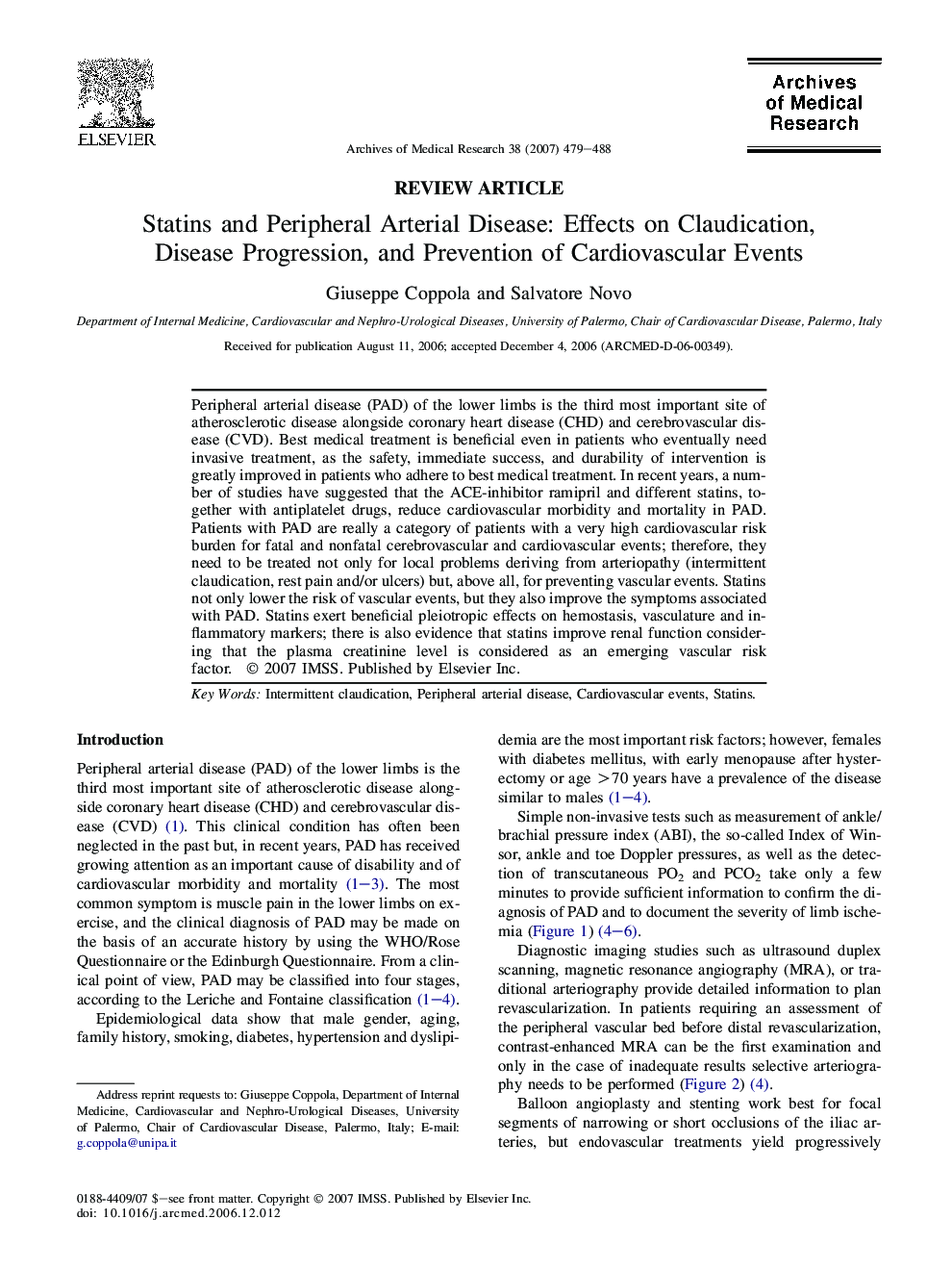| Article ID | Journal | Published Year | Pages | File Type |
|---|---|---|---|---|
| 3447754 | Archives of Medical Research | 2007 | 10 Pages |
Peripheral arterial disease (PAD) of the lower limbs is the third most important site of atherosclerotic disease alongside coronary heart disease (CHD) and cerebrovascular disease (CVD). Best medical treatment is beneficial even in patients who eventually need invasive treatment, as the safety, immediate success, and durability of intervention is greatly improved in patients who adhere to best medical treatment. In recent years, a number of studies have suggested that the ACE-inhibitor ramipril and different statins, together with antiplatelet drugs, reduce cardiovascular morbidity and mortality in PAD. Patients with PAD are really a category of patients with a very high cardiovascular risk burden for fatal and nonfatal cerebrovascular and cardiovascular events; therefore, they need to be treated not only for local problems deriving from arteriopathy (intermittent claudication, rest pain and/or ulcers) but, above all, for preventing vascular events. Statins not only lower the risk of vascular events, but they also improve the symptoms associated with PAD. Statins exert beneficial pleiotropic effects on hemostasis, vasculature and inflammatory markers; there is also evidence that statins improve renal function considering that the plasma creatinine level is considered as an emerging vascular risk factor.
